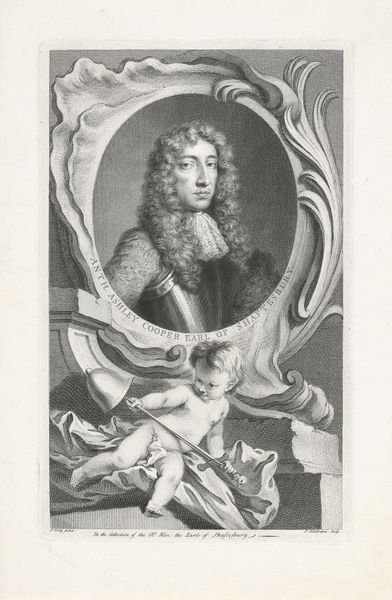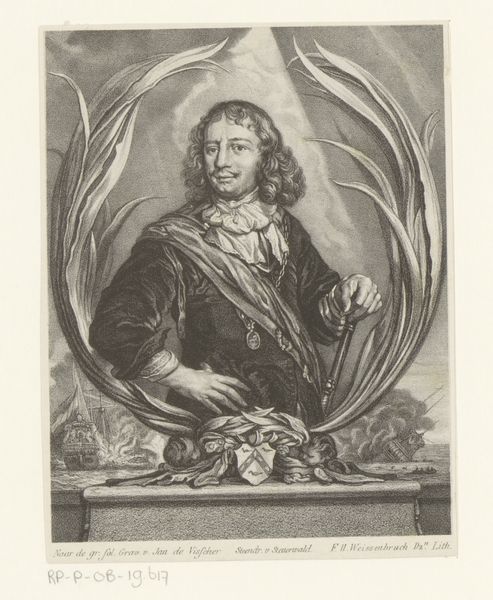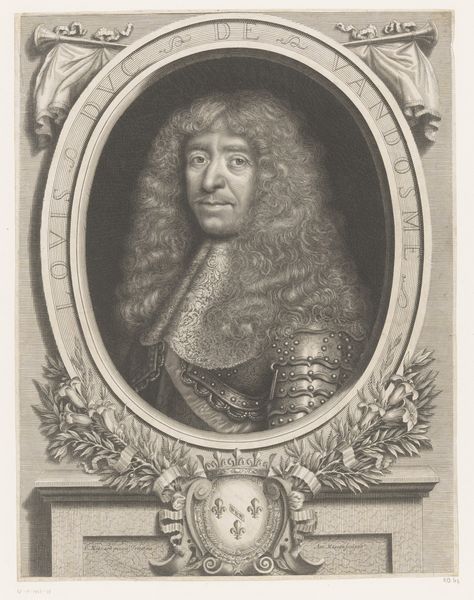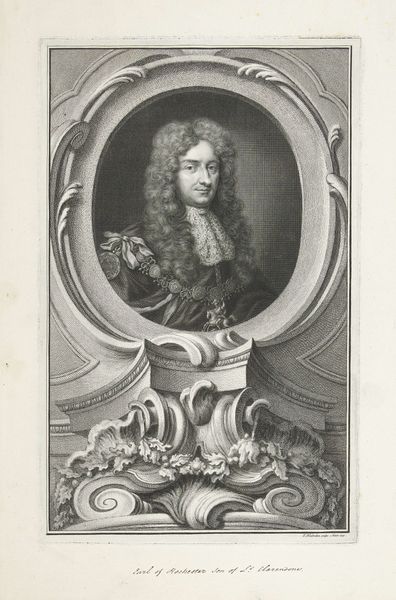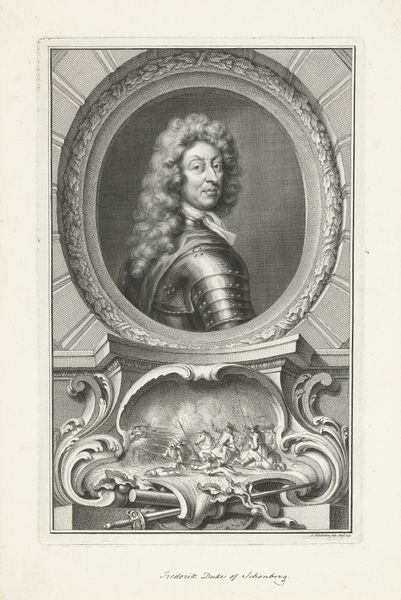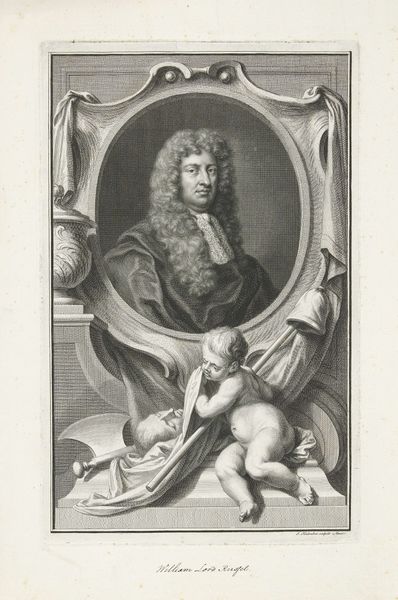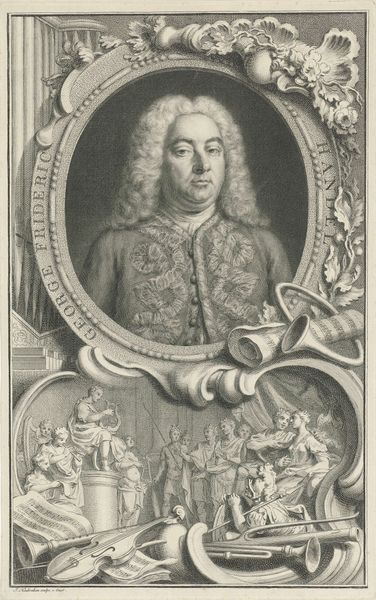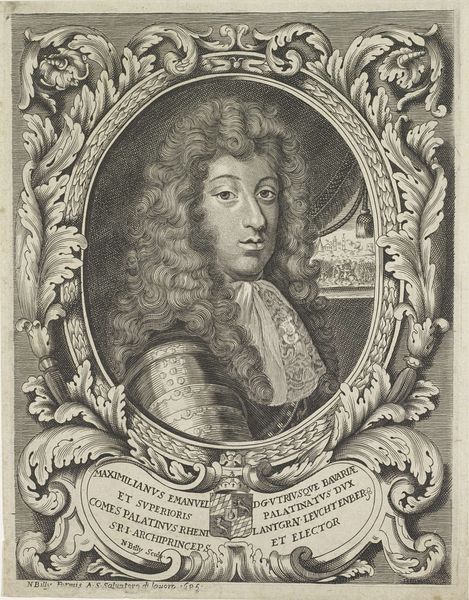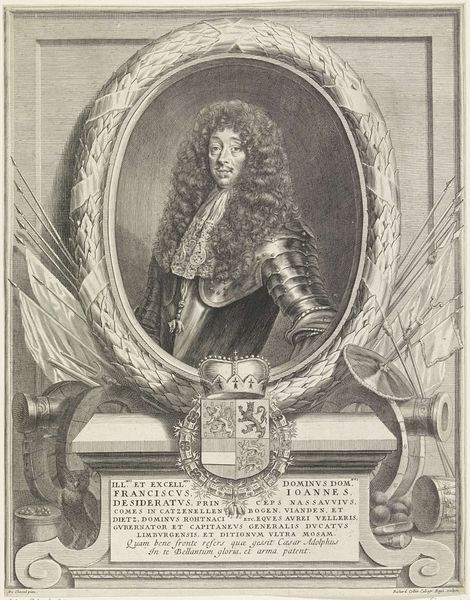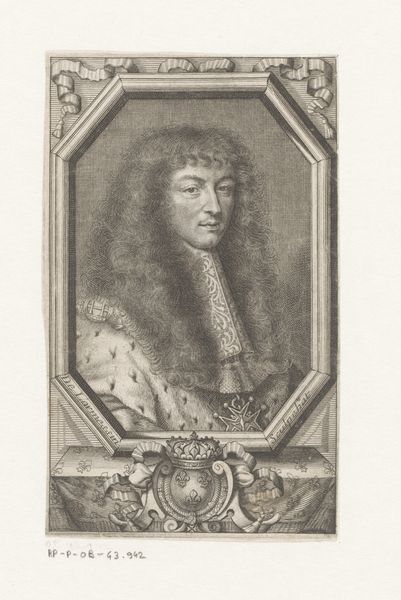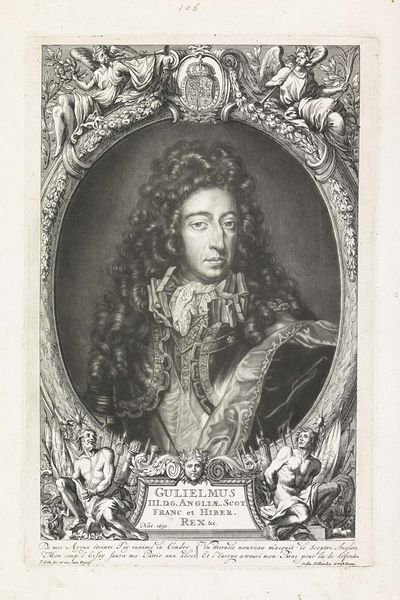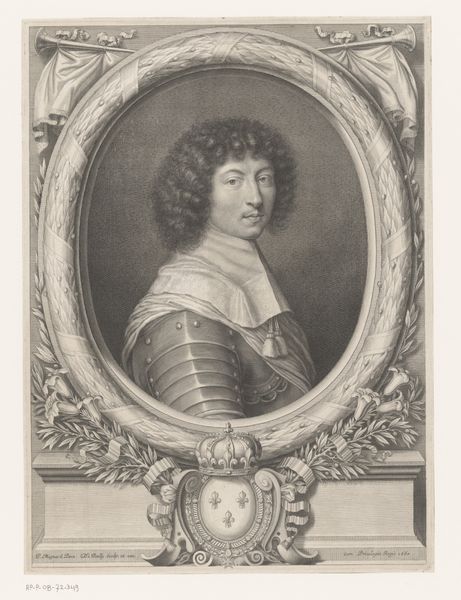
print, engraving
#
portrait
#
baroque
# print
#
old engraving style
#
unrealistic statue
#
pencil drawing
#
history-painting
#
engraving
Dimensions: height 372 mm, width 234 mm
Copyright: Rijks Museum: Open Domain
Editor: Here we have Jacob Houbraken’s "Portrait of George Digby," an engraving from around 1736 to 1738. The elaborate frame is striking; what meaning can you glean from its symbols? Curator: Indeed. Houbraken gives us a glimpse into the symbolic language of the era. The frame is rife with meaning, extending far beyond mere decoration. Notice the cherub and the eagle. How do they strike you? Editor: The cherub seems to embrace the eagle protectively. Are these symbols of virtue and power? Curator: Precisely! The cherub, a symbol of innocence and divine love, coupled with the eagle—traditionally associated with Roman emperors and thus, power, victory, and foresight—presents Digby as possessing both moral uprightness and worldly strength. Do you notice the other objects in the engraving, seemingly unrelated to Digby? Editor: Now that you mention it, what are the horn and serpent near the cherub meant to symbolize? Curator: Those are classical symbols! The cornucopia, or horn of plenty, indicates prosperity and abundance; and the serpent often represents wisdom and, sometimes, deceit or transformation, depending on context. So, their presence suggests the virtues and the temptations inherent in a life of power. What does the integration of these elements within the portrait convey? Editor: That Digby navigates worldly affairs with virtue, perhaps? It seems these aren't arbitrary flourishes but considered details meant to shape how viewers perceive him. Curator: Precisely! Each carefully chosen element contributes to a constructed narrative, shaping Digby’s legacy for posterity. This reinforces how images can encapsulate entire belief systems. Editor: This really makes me appreciate the depth present even in portraiture of this era. The symbolic language elevates the subject beyond just their physical likeness. Curator: Exactly. By understanding the language of symbols, we gain a deeper insight into the cultural values and psychological undercurrents of the past.
Comments
No comments
Be the first to comment and join the conversation on the ultimate creative platform.
